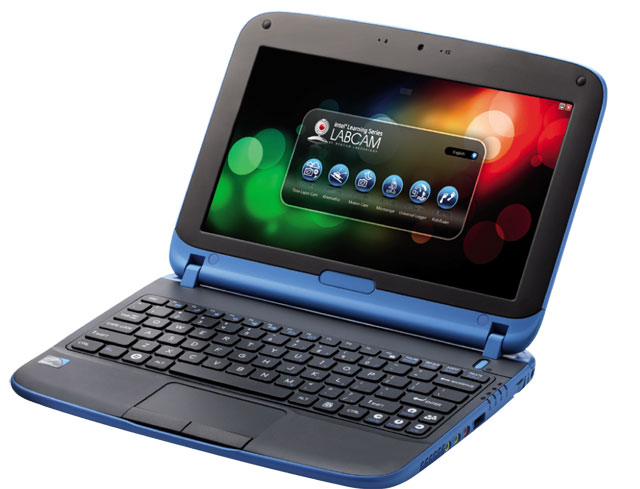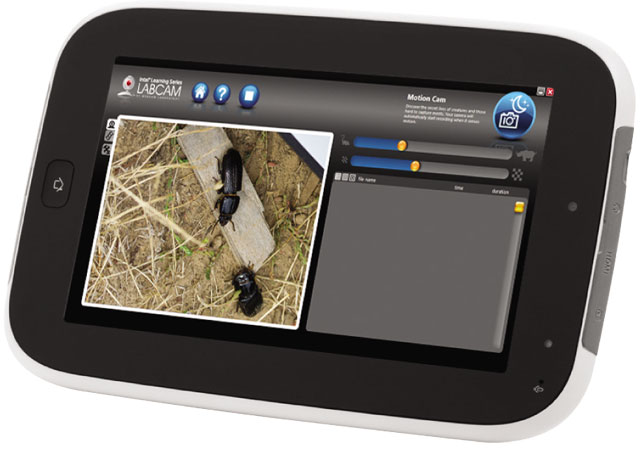The evolution of the school computer. Part two, modern

( Source )
We continue the story of the evolution of school computer classes and the development of computer science curricula. In the first part, we recalled the first steps of computer science in Soviet schools; the second will focus on the recent past and present, in addition, we will leave a little room for discussion about what the school should teach in the field of computer literacy. As usual, we invite everyone to express their point of view in the comments.
Part 3. Before and after the millennium.
At the very beginning of the new millennium, computer classes in Russian schools were a rather colorful sight. In the new-market mess of the 90s, some schools managed to snatch quite decent equipment (with the help ofThe details of what is happening, it seems, vary from region to region, but in general the picture looked approximately the same: computers began to arrive in schools in portions of different sizes. Say, for our school (I recall, we are talking about Nizhny Novgorod), for a start, grace poured out in the form of two PCs. This time there was no zoo anymore, since by that time x86 had already supplanted all other platforms from the mass segment.
The first experience of the mass connection of schools to the Internet dates back to the same time. In our region, the movement was carried out under the auspices of the city administration, schools received free (albeit terribly slow) Internet via a Zelax physical modem. If it’s not difficult, please write when and how you connected your school? It is very interesting to me.

Russian school ... ( source)
Taking advantage of the new operating systems, teachers began to actively integrate class computers into local networks, which made it possible, using special programs, to centralize class management, thereby greatly simplifying the life of the teacher. By the way, it is with software that the next major school campaign is connected, this time - right at the state level. Until a certain time, schools, like many other organizations of our vast Motherland (not to mention citizens), did not really care about the licensing of the software used. Meanwhile, the country had to leave the gloom, therefore, a grandiose attempt was made to legalize school software in the framework of the First Aid program. Under the program, schools were granted a 3-year license for the most popular commercial software, including Microsoft operating systems. Schools especially provincial, perked up, but 3 years have passed - and? That's right, the Ministry of Education orders to demolish all the installed programs and to install free software in an orderly manner, that is, Linux (facepalm.jpg). On the Linux adventure in schools, one could write a separate article, I won’t go into details here.
So, having hardly recovered from the surprises of their native state, schools entered today with the hardware and software baggage that they managed to pick up in various ways.
Part 4. Today + tomorrow
But to seal, as you know, it turned out differently, and in most cases is not enough. There are not enough programs, because a skinny school budget is only enough for the most necessary. Even more computers are missing, because now they are used not only for computer science. How to be? There are not many options. Most schools choose the easiest way: increase the number of classes and, over time, seek funds for their arrangement. Such a technique can hardly be called methodically impeccable: the needs of the school are still ahead of the “flow of time. In addition, computer classes have a special status: you can’t put anyone in them. It turns out that the room for computers is, as it were, withdrawn from the school, which is not good.
... and British. Find the difference ( source )
Other schools approach the issue more inventively: instead of the desktop class, they buy a set of laptops or netbooks. Out-of-school hours, they are stored on charging in special rooms, and when the moment comes, they are brought into the classroom, which immediately automatically becomes a computer. Moreover, if we add an access point to the kit, we get a computer network, which is not so difficult to bring to the Internet. In principle, there can be as many such sets as there would be funds. And by the way, by the way, everything turns out well too: the netbook class costs no more than the PC class, and there are no problems with the operating system, since it is already pre-installed.
However, the problem can be solved even more dramatically, in principle, abandoning school computers in favor of individual student computers. It is this doctrine that Intel has consistently implemented in the Intel Learning Series . About the key product of this series, namely, the Intel classmate PC, the Intel blog has been written several times , however, it was long enough to return to the topic again. At the moment, the Learning Series consists of three types of devices:
- Intel studybook - 7-inch tablet for students on the Intel Atom Z650 processor running Windows 7 or Android Honeycomb;
- Intel Teacher PC - a teacher’s workplace based on a laptop or ultrabook;
- Intel classmate PC is a student computer in two versions: a regular netbook (Clamshell) or a netbook-transformer with a touch display (Convertible). Both of them are assembled on Intel Atom N2600, Windows 7 or Linux is used as the OS.

Intel classmate PC-Clamshell
All student devices from the Learning Series have a number of special features, the need for which is dictated by the specifics of their application. Firstly, it is protected from external influences (special case, waterproof keyboard). Secondly, a set of pre-installed programs for working in the classroom and interacting with the teacher’s computer. And thirdly, the affordable price that allows you to deploy Intel solution in countries with a poor education system, which we, unfortunately, also belong to.

Intel studybook tablet
In fact, Intel’s school computer is a complete replacement for the student’s portfolio, but it’s undesirable to beat their neighbor’s head. He performs all the other functions of the main device for training: electronic textbooks are easily placed in it, and homework is easily done (even handwritten), and even from all sorts of goodies in the form of self-checking tests, automatically sent homework, etc. any teacher will crush. The only question is whether something like this will be implemented in our country in the foreseeable future. I still believe that at least to some extent it will be.

Intel classmate pc-convertible
Part 5. What to teach on computer science?
In this post, I have intentionally still not touched on the topic of the school curriculum in computer science in order to formalize these thoughts in a separate block. Let me remind you the summary of the previous series. At the time computer science appeared in Soviet schools, the program of this subject was purely academic; theoretical concepts of cybernetics and programming languages were taught. In subsequent years, it shifted more and more towards the applied side, and by the beginning of 2000 they were already studying the specific individual software, such as text, graphic editors, operating systems, etc. Is this good or bad? And in general, what should be taught in computer science lessons? As a person with a certain side related to the subject, I venture to express my opinion.Studying specific programs seems at first glance not a very good idea. Indeed, you could be taught one text editor, and subsequently you had to work in another. Another aspect of the problem is that the programs themselves change over time. I well remember what a teacher’s gap occurred from the new “ribbon” interface of MS Office 2007. But it’s not necessary to teach schoolchildren to poke buttons, it’s much more useful to know that each text editor has a search and a replacement, there are standard formatting tools, etc. .d. Having such basic knowledge, a person will much more quickly find a common language with both Word, and with Writer, and with Pages. The same thing with operating systems: from the point of view of the user, there is no fundamental difference between Windows and Linux: if you know what to look for, where it is located, you will certainly find it. In my opinion, raising PC users from children is absolutely necessary. Despite the fact that almost every family has a computer now, most children still do not know how to handle it if it is something more complicated than launching a toy from the desktop. Meanwhile, the demand for computer literacy is growing every year; giving school its basics, we make it easy for teens to take their first steps in the professional field.
The study of programming languages must also be present in the school curriculum, if only because it is one of the most easily acquired methods of training logical and mathematical thinking. The ability to break down a task into simple steps, optimize the execution of each step and the whole task as a whole, correctly identify all the branches - only computer science can give these skills at school, and they will be useful not only to programmers.
It turns out that, whatever one may say, it is necessary to teach both one and the other, which, in principle, is now taking place. On this optimistic note, with faith in the bright future of school informatics, let me finish this post.
